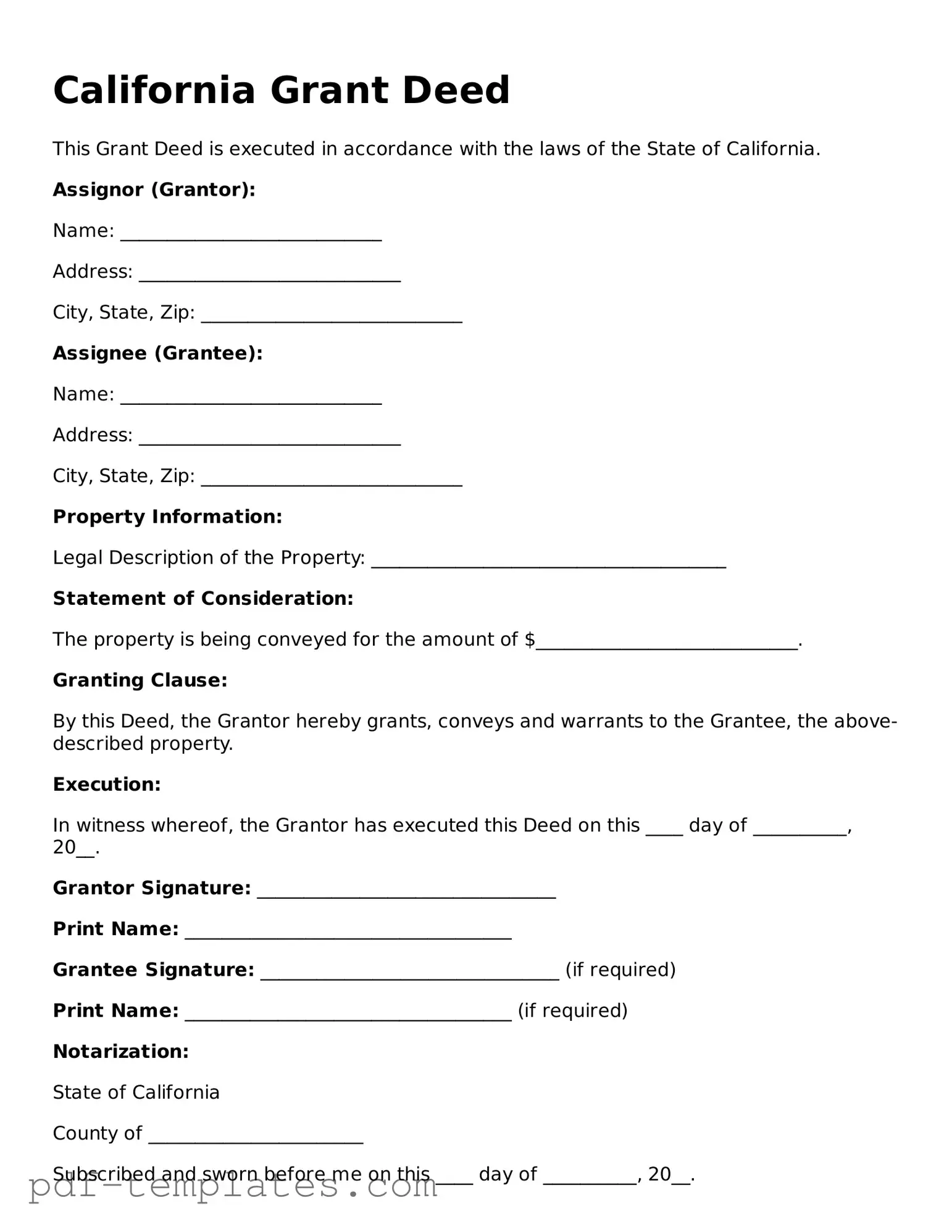The California Grant Deed is similar to the Quitclaim Deed. Both documents are used to transfer ownership of real estate. However, while a Grant Deed provides certain guarantees about the title, a Quitclaim Deed transfers whatever interest the grantor has without any warranties. This means that if there are issues with the title, the grantee may have limited recourse. Individuals often use Quitclaim Deeds in situations involving family transfers or when the parties know each other well.
In understanding various property transfer documents, it is crucial to recognize the role of the California Resale Certificate, officially known as form CDTFA-230, which allows businesses to purchase items without sales tax when those items will be resold. This certificate's misuse can lead to serious penalties, making awareness of All California Forms essential for legal compliance and efficient business operations.
The Warranty Deed is another document that shares similarities with the California Grant Deed. Like the Grant Deed, the Warranty Deed guarantees that the grantor holds clear title to the property and has the right to transfer it. The key difference lies in the level of protection offered. A Warranty Deed provides more extensive assurances, including protection against any future claims to the title. This makes it a preferred choice in many real estate transactions where buyers want added security.
The Bargain and Sale Deed is also comparable to the California Grant Deed. This type of deed implies that the grantor has title to the property and the right to sell it, but it does not provide the same warranties as a Grant Deed. Essentially, it conveys ownership but leaves the buyer to assume the risk regarding any potential title defects. Buyers often encounter this type of deed in transactions involving foreclosures or tax sales.
The Special Purpose Deed is another document that can be likened to the California Grant Deed. This type of deed is used for specific transactions, such as transferring property from a trust or estate. While it serves a unique purpose, it still functions to convey ownership, similar to a Grant Deed. However, it may not include the same guarantees about the title, depending on the circumstances of the transfer.
A Trustee's Deed is also similar in that it is used to transfer property, particularly when a property is sold at a foreclosure auction. This deed is executed by a trustee and conveys title to the winning bidder. While it transfers ownership, it often comes with fewer protections than a Grant Deed. Buyers should be aware that they may be taking on risks associated with the title when acquiring property through a Trustee's Deed.
The Executor's Deed is another document that resembles the California Grant Deed. It is used when an executor of an estate sells property belonging to the deceased. This deed conveys ownership to the buyer, but it may not offer the same warranties as a Grant Deed. The buyer may need to conduct thorough due diligence to ensure they are aware of any potential title issues before proceeding with the purchase.
Finally, the Deed of Trust is also related to the California Grant Deed, although it serves a different purpose. This document is used in real estate financing, where the property acts as collateral for a loan. While it does not transfer ownership in the same way a Grant Deed does, it establishes a legal claim against the property until the loan is repaid. Understanding the distinctions between these documents is crucial for anyone involved in real estate transactions.
